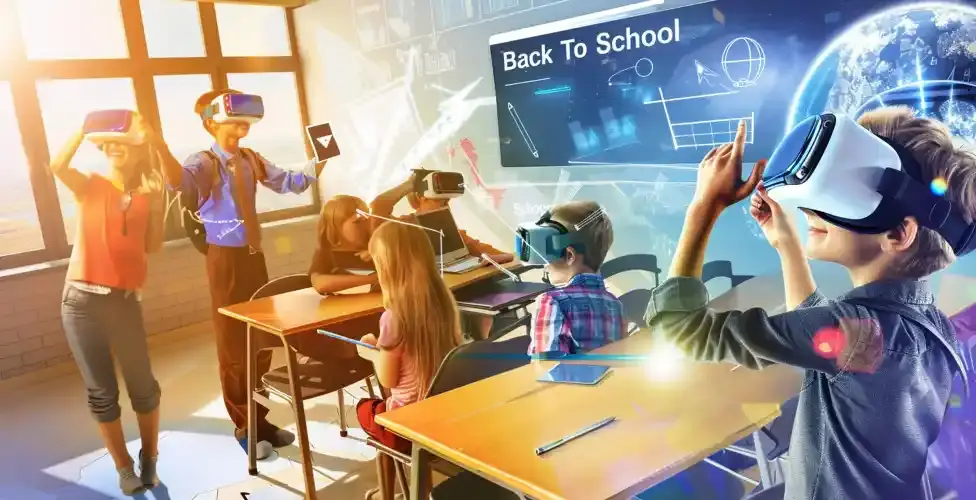As we move further into the 21st century, technology is playing an increasingly vital role in transforming how education is delivered, accessed, and experienced. Universities, which have traditionally been centers of higher learning, are now at the forefront of adopting technological innovations to adapt to the changing needs of students, faculty, and society at large. From digital classrooms and online learning platforms to AI-driven teaching tools and advanced research capabilities, technology is reshaping the landscape of higher education.
This article will explore the key ways in which technology is shaping the future of universities and the profound impact these changes will have on students, educators, and the education system itself.
1. Online Learning and Digital Classrooms
The advent of the internet and digital communication tools has made online learning a central feature of modern education. Even before the pandemic, universities were increasingly offering online courses and degree programs, but the shift to remote learning during COVID-19 has accelerated the use of digital platforms.
Online Degree Programs
Universities are now offering full-degree programs that can be completed entirely online, breaking down geographical barriers and allowing students from around the world to access top-tier education. This trend is particularly beneficial for non-traditional students—those with full-time jobs, family responsibilities, or who live in areas with limited access to physical universities.
- Global Accessibility: Students no longer need to relocate to attend prestigious institutions, making higher education more accessible, particularly for international students.
- Flexible Learning: Online education offers flexibility, allowing students to set their own pace, choose when to study, and balance education with other aspects of their lives.
- Diverse Offerings: Universities are providing an array of programs that range from short courses to full-fledged degrees in diverse fields, enabling lifelong learning.
Digital Classrooms
Digital classrooms, or virtual classrooms, incorporate tools like video conferencing, shared workspaces, and digital resources that make it possible to conduct classes in real-time from anywhere. This allows educators to continue teaching, engage with students, and conduct discussions without being limited by physical space.
- Interactive Learning: Tools like online quizzes, forums, group discussions, and virtual labs allow for active participation and interaction, replicating the in-person classroom experience in a virtual environment.
- Collaborative Tools: Students and instructors can collaborate seamlessly via digital platforms like Google Classroom, Microsoft Teams, or Moodle, making it easier to share resources, submit assignments, and provide feedback.
2. Artificial Intelligence in Education
Artificial Intelligence (AI) is already making waves in education by automating administrative tasks, personalizing learning experiences, and providing insights into student performance. AI-powered tools are becoming essential in creating smarter, more efficient educational environments.
Personalized Learning Experiences
One of the most promising applications of AI is its ability to provide personalized learning experiences tailored to individual student needs. AI-powered tools can track students’ learning progress, adapt content based on their performance, and offer targeted recommendations for improvement.
- Adaptive Learning Systems: AI algorithms can assess a student’s strengths and weaknesses in real-time and adjust course content accordingly, ensuring that students receive the right level of challenge and support.
- Data-Driven Insights: Educators can use AI tools to analyze student data, identify patterns in learning behaviors, and provide targeted interventions for students who may be struggling.
Automation of Administrative Tasks
AI can also help universities automate repetitive administrative tasks, allowing staff to focus on more impactful work. From grading assignments to scheduling courses and managing resources, AI can reduce the time spent on mundane administrative duties, improving efficiency across university operations.
- Grading Automation: AI-driven grading systems can quickly and accurately evaluate assignments, freeing up educators to focus on providing feedback and engaging with students.
- Chatbots for Student Support: Universities are increasingly using AI-powered chatbots to answer frequently asked questions, guide students through processes like registration, and provide real-time support.
3. Virtual and Augmented Reality (VR and AR)
Virtual Reality (VR) and Augmented Reality (AR) technologies are revolutionizing how students interact with educational content. These immersive technologies provide innovative ways to visualize complex concepts, engage with historical events, and experience hands-on learning in a virtual setting.
Enhancing Learning with Immersive Experiences
- Virtual Labs and Simulations: VR and AR can simulate laboratory experiments or complex engineering tasks, offering students the chance to engage in hands-on learning without the need for physical labs or expensive equipment. Medical students, for example, can practice surgeries in a virtual environment before working with real patients.
- Field Trips and Historical Reenactments: With VR, students can take virtual field trips to historical sites or experience ancient civilizations as if they were actually there. This technology can bring history and geography lessons to life in ways traditional textbooks cannot.
Collaborative Learning Environments
Both VR and AR can be used to create collaborative virtual learning environments where students and educators can interact in shared spaces regardless of location. VR technology allows for virtual classrooms where participants can interact with each other, manipulate objects, and even conduct real-time experiments.
- Global Classrooms: Students from different parts of the world can meet in a virtual space, collaborate on projects, and exchange knowledge, broadening their perspectives.
- Interactive Content: Students can engage in interactive lectures or workshops, exploring subjects from different angles and gaining hands-on experience.
4. Big Data and Learning Analytics
Big data refers to the vast amount of information generated through student interactions with digital platforms. By analyzing this data, universities can gain valuable insights into student behavior, performance, and engagement, helping them make more informed decisions about how to improve teaching and learning.
Improving Student Retention
Learning analytics, powered by big data, can help universities identify students who may be at risk of dropping out or failing a course. By analyzing trends in student performance, engagement, and behavior, institutions can intervene early and provide the support necessary to help students stay on track.
- Predictive Analytics: By identifying patterns in student data, universities can predict academic outcomes and offer timely interventions for struggling students.
- Tailored Academic Support: Using data from learning platforms, universities can offer personalized academic support and tutoring to help students improve their understanding of the material.
Enhancing Curriculum Design
Big data can also be used to assess the effectiveness of university programs and courses. By analyzing student feedback, assessment results, and engagement with course content, institutions can make data-driven decisions about curriculum design and make improvements where necessary.
- Course Evaluation: Data can provide insights into which parts of a course are most engaging or which need more attention, allowing educators to refine their teaching methods.
- Curriculum Relevance: By analyzing trends in industry demands and the job market, universities can update their programs to ensure that students graduate with skills that are in demand.
5. Blockchain and Credentialing
Blockchain technology, which is known for its use in cryptocurrency, has the potential to revolutionize how academic credentials and certifications are managed. This decentralized and secure digital ledger can help universities create tamper-proof records of student achievements and credentials.
Secure Digital Credentials
- Verified Degrees and Certificates: Blockchain can help universities issue verified digital degrees and certificates, making it easier for students to prove their qualifications to potential employers and reducing the risk of fraud.
- Portable Records: Students can control their academic records on the blockchain, sharing them securely with employers or other institutions whenever necessary, without the need for traditional transcripts or paper-based verification.
Reducing Administrative Costs
Blockchain technology could also streamline administrative processes by automating the verification of credentials, reducing the time and cost associated with maintaining and validating academic records.
6. Artificial Intelligence in Research
Universities are also leveraging AI to push the boundaries of research and innovation. AI-powered tools are enhancing how researchers collect, analyze, and interpret data, leading to faster breakthroughs and more accurate results.
Accelerating Scientific Discovery
AI can assist researchers in analyzing vast datasets, running simulations, and even making predictions. For example, AI has been instrumental in advancing fields such as drug discovery, climate modeling, and genomics.
- AI-Driven Research: Researchers can use machine learning algorithms to identify patterns and correlations in data that might be missed by human analysts, accelerating the pace of scientific discovery.
- Predictive Models: AI can create predictive models that help scientists forecast outcomes based on existing data, leading to more efficient research.
Collaboration Across Disciplines
AI tools allow researchers from different fields and geographic locations to collaborate more easily by sharing data, conducting joint analyses, and using powerful computational resources.
Conclusion
Technology is fundamentally transforming the future of universities by reshaping the way education is delivered, experienced, and enhanced. From online learning platforms and AI-driven tools to immersive technologies like VR and blockchain, universities are increasingly adopting innovations that make education more accessible, personalized, and efficient.
As these technologies continue to evolve, universities will need to balance innovation with ethical considerations, ensuring that technology serves the needs of both students and educators. The role of technology in shaping the future of universities is undeniable, and the institutions that embrace these changes will be best positioned to prepare students for success in an ever-changing world.

